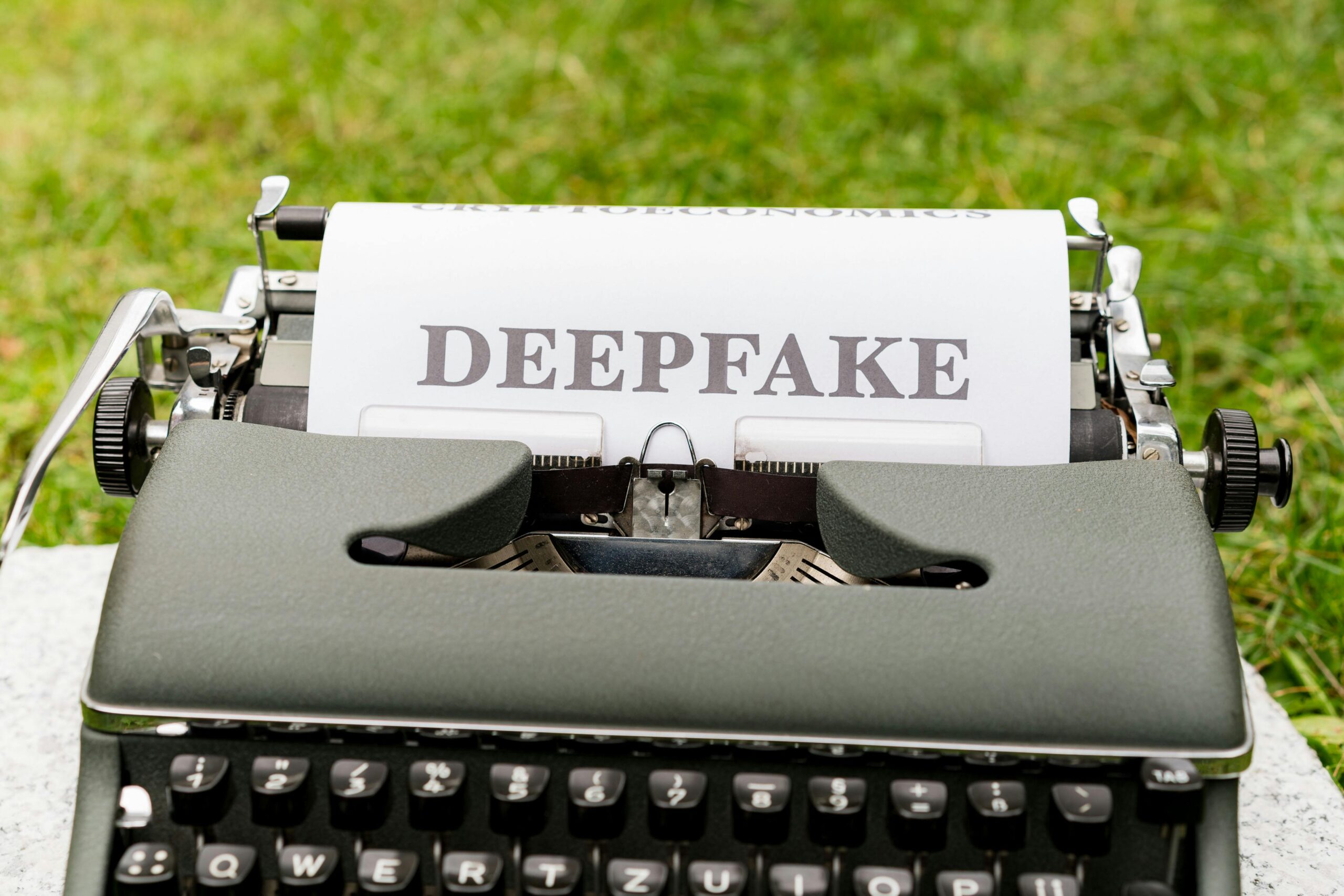The Alarming Rise of Deepfake Technology
In today’s digital landscape, businesses face an unprecedented challenge from deepfake technology—sophisticated AI-generated content that can convincingly manipulate audio, video, and images to impersonate individuals or create entirely fictional scenarios. What began as a novelty has evolved into a powerful weapon for fraud, corporate espionage, and reputation damage. As deepfake threats to businesses intensify, organizations must urgently understand and prepare for this emerging risk.
Recent statistics reveal the disturbing trajectory: deepfake incidents targeting businesses increased by 158% in 2023 alone, with financial services, technology, and healthcare sectors experiencing the highest volumes of attacks. This article explores how deepfake threats to businesses are manifesting, the devastating consequences of successful attacks, and the crucial defensive strategies organizations can implement to protect themselves.
Key notes
- Deepfake attacks on businesses increased by 158% in 2023
- The technology has become more accessible and sophisticated
- Effective defense requires a comprehensive approach combining technical solutions
How Deepfakes Are Targeting Businesses: Attack Vectors
Executive Impersonation Fraud
Among the most alarming deepfake threats to businesses is executive impersonation. Criminals now create convincing audio or video of C-suite executives to authorize fraudulent financial transactions or disseminate false information. In 2023, a UK-based energy company lost $243,000 when attackers used AI-generated voice technology to impersonate the company’s CEO, instructing a finance employee to transfer funds to a “confidential” account for an acquisition.
These attacks succeed because they exploit human psychology—employees naturally respond to perceived authority figures, especially when the request appears urgent or confidential. When the CEO’s voice requests immediate action, few question the directive.
Corporate Espionage and Insider Threats
Deepfakes enable sophisticated corporate espionage campaigns that would be impossible with traditional methods. Attackers can create realistic video content showing executives or employees in compromising situations, then use this material for blackmail to extract trade secrets or insider information.
In one documented case, a manufacturing company’s lead engineer was approached with fabricated video evidence of alleged misconduct. The attackers threatened to release the content unless provided with proprietary design specifications. This represents how deepfake threats to businesses can bypass technological defenses by targeting human vulnerabilities.
Market Manipulation and Stock Price Impacts
The financial markets react instantly to news about public companies. Deepfakes showing executives making fabricated announcements about earnings, acquisitions, or leadership changes can trigger immediate stock price movements, creating opportunities for market manipulation.
A 2023 incident involved a crude but temporarily effective deepfake video of a pharmaceutical company’s CEO announcing a failed drug trial, causing a 4.3% stock drop before the company could issue a denial. This illustrates how even brief exposure to deepfake content can inflict significant financial damage.

Brand and Reputational Damage
Perhaps the most enduring deepfake threats to businesses involve reputation damage. Fabricated videos showing products malfunctioning, executives making controversial statements, or company facilities violating regulations can devastate brand trust. Even after debunking, these false narratives often persist in public memory.
A luxury hotel chain faced this challenge when deepfake videos appearing to show unsanitary conditions in their properties went viral. Despite providing evidence that the content was falsified, booking rates declined by 17% in the following quarter.
The Technology Behind Deepfakes: Understanding the Threat
How Modern Deepfakes Are Created
To effectively counter deepfake threats to businesses, organizations must understand the underlying technology. Modern deepfakes utilize generative adversarial networks (GANs)—two AI systems that compete against each other. One creates content while the other evaluates its authenticity, resulting in increasingly realistic outputs through continuous improvement.
The barrier to entry for creating convincing deepfakes has fallen dramatically. What once required substantial computing resources and technical expertise can now be accomplished with consumer-grade hardware and user-friendly applications. This democratization of deepfake creation technology has significantly expanded the threat landscape.
Technological Advancements Driving Increased Realism
Recent advances in AI have eliminated many of the telltale signs that once made deepfakes identifiable:
- Synchronized speech and facial movements: Early deepfakes often displayed unnatural mouth movements or audio sync issues. Modern systems create nearly perfect alignment.
- Consistent lighting and shadows: Contemporary deepfakes account for environmental lighting conditions, casting appropriate shadows that maintain physical realism.
- Emotional continuity: Advanced deepfakes maintain consistent emotional expressions throughout videos, eliminating the uncanny transitions that once revealed manipulated content.
- Resolution and detail preservation: High-definition deepfakes retain fine details like skin texture, hair movement, and environmental reflections in eyes.
As these technologies continue advancing, deepfake threats to businesses will become increasingly difficult to detect without specialized tools.
The Business Impact: Quantifying the Damage
Financial Losses from Deepfake Attacks
The direct financial impact of deepfake attacks can be substantial:
- Average financial fraud loss: $1.8 million per successful deepfake-enabled transaction fraud
- Legal and investigation costs: $380,000 average expense for deepfake incident response
- Stock price impact: Public companies experience an average 2.7% share price decline following revealed deepfake incidents
- Customer churn: Businesses report 12-23% customer loss following major reputation-damaging deepfake events
Long-term Trust Erosion
Beyond immediate financial impacts, deepfake threats to businesses create lasting trust erosion that affects multiple stakeholders:
- Customer confidence: 64% of consumers report they would reconsider doing business with a company that had been successfully targeted by deepfakes
- Investor relations: Institutional investors cite increasing concern about companies’ preparedness for deepfake threats
- Partner networks: Supply chain and business partners increasingly require deepfake resilience protocols in security agreements
- Employee morale: Organizations report increased staff anxiety and reduced productivity following deepfake incidents

Developing a Defense Strategy Against Deepfake Threats
Technical Countermeasures
Organizations confronting deepfake threats to businesses should implement multi-layered technical defenses:
- Detection technology deployment: Invest in specialized deepfake detection software that analyzes visual and audio inconsistencies undetectable to human observers. Leading solutions achieve 96% detection accuracy on current-generation deepfakes.
- Digital content authentication: Implement cryptographic signing and blockchain verification for official communications to provide verification mechanisms for authentic content.
- Communication channel security: Establish secure, authenticated channels for sensitive communications, particularly for financial authorization or confidential information sharing.
- Biometric verification augmentation: Enhance existing authentication systems with multi-factor verification including behavioral biometrics that are difficult to simulate.
Organizational and Process Safeguards
Technical solutions alone cannot address deepfake threats to businesses. Organizations must also implement process changes:
- Verification protocols: Establish mandatory secondary verification procedures for high-value transactions or sensitive data access, regardless of the apparent source of the request.
- Rapid response framework: Develop a structured incident response plan specifically for deepfake events, including communications templates, stakeholder notification procedures, and evidence preservation protocols.
- Regular penetration testing: Conduct simulated deepfake attacks to test organizational vulnerability and employee awareness.
- Vendor and supply chain vetting: Extend deepfake security requirements to business partners who may have authorization to initiate transactions or access sensitive systems.
Employee Training and Awareness
Human judgment remains a critical defense against deepfake threats to businesses:
- Awareness training: Educate employees about the existence, capabilities, and identifying characteristics of deepfakes.
- Skepticism cultivation: Train staff to maintain healthy skepticism about unusual requests, particularly those involving financial transactions or confidential information.
- Reporting mechanisms: Establish clear channels for employees to report suspected deepfake attempts without fear of reprisal for false positives.
- Regular simulation exercises: Conduct periodic simulated deepfake incidents to reinforce training and evaluate organizational readiness.
Case Studies: Learning from Successful Defenses
Financial Institution’s Integrated Approach
A global financial services firm successfully thwarted a sophisticated deepfake attack targeting their treasury operations. Their defense incorporated:
- AI-powered voice analysis that flagged subtle inconsistencies in a deepfake call allegedly from their CFO
- A mandatory callback protocol for transaction authorizations exceeding $50,000
- Regular employee training specifically addressing deepfake threats to businesses
The attempted fraud was identified before any financial loss occurred, demonstrating how layered defenses effectively mitigate risks.
Technology Company’s Rapid Response
When a technology manufacturer discovered deepfake videos showing their products exploding, their prepared response plan enabled:
- Immediate technical analysis proving the content’s fraudulent nature
- Coordinated communications across social media, traditional press, and customer channels
- Cooperation with platform providers to expedite content removal
- Transparent disclosure about the incident and their security measures
This swift, coordinated response limited reputational damage and customer concerns.
Legal and Regulatory Considerations
Emerging Legislation
The legal landscape surrounding deepfake threats to businesses continues evolving:
- The European Union’s Digital Services Act now includes provisions specifically addressing deepfake content
- In the United States, several states have enacted legislation criminalizing malicious deepfake creation
- Industry-specific regulations increasingly require organizations to implement reasonable safeguards against synthetic media attacks
Organizations should monitor these developing legal frameworks as part of their risk management strategy.
Legal Recourse Options
Businesses victimized by deepfakes may pursue several legal remedies:
- Criminal charges for fraud, defamation, or intellectual property theft
- Civil litigation against identifiable perpetrators
- Digital platform liability claims in jurisdictions with relevant protections
- Regulatory complaints in regulated industries
However, attribution remains challenging, highlighting the importance of preventative measures over reactive legal action.
The Future of Deepfake Threats and Defenses
Anticipated Technological Developments
Several trends will shape the evolution of deepfake threats to businesses:
- Real-time deepfake generation: Advancing technology will enable instantaneous creation of deepfake content, potentially during live video conversations.
- Cross-modal synthesis: Future deepfakes will seamlessly combine multiple elements—voice, video, written text—creating comprehensive false narratives.
- Defensive AI advancement: Counter-technology will continue developing, creating an ongoing technological competition between deepfake creators and detectors.
- Quantum verification: Emerging quantum computing technologies may eventually provide un-hackable authentication mechanisms for digital content.
Strategic Preparedness
Forward-thinking organizations addressing deepfake threats to businesses should:
- Establish security governance: Create specific leadership responsibility for synthetic media threats within existing security frameworks.
- Develop industry cooperation: Participate in information-sharing consortiums focusing on deepfake threat intelligence.
- Invest in ongoing research: Support academic and commercial research into both deepfake detection and prevention technologies.
- Advocate for standards: Engage with industry groups developing technical standards for content authentication and chain of custody.
Building Business Resilience Against Deepfake Threats
As deepfake technology advances, the threats to businesses will undoubtedly intensify. However, organizations that implement comprehensive defense strategies—combining technical tools, organizational processes, employee training, and legal preparedness—can significantly reduce their vulnerability.
The most successful approaches to combating deepfake threats to businesses embrace a proactive rather than reactive mindset. By establishing robust verification systems, maintaining healthy skepticism about digital content, and preparing for potential incidents before they occur, organizations can navigate this emerging threat landscape effectively.
In this new reality where seeing is no longer believing, businesses must adapt their security paradigms accordingly. The organizations that thrive will be those that acknowledge deepfake threats as a permanent feature of the digital landscape and build appropriate resilience into their operations.
Author
Jacob
Category
Cybercrime
Read Time
9 min
